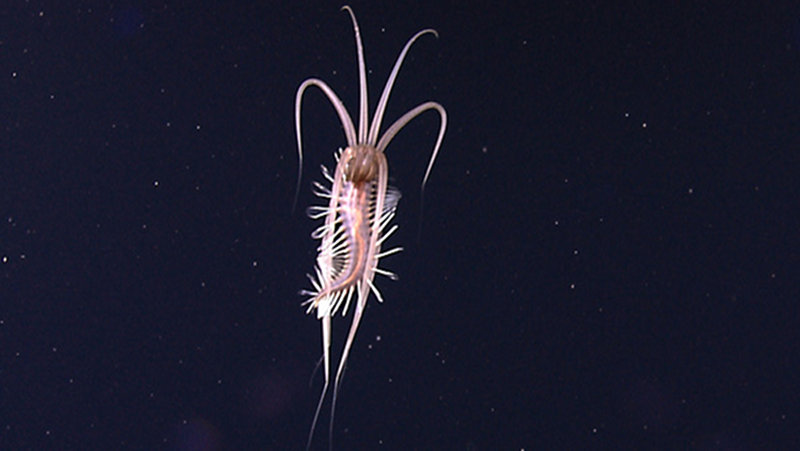
A swimming polychaete worm, with long squid-like tentacles used for breathing, undulates through the water column. Image courtesy of NOAA Office of Ocean Exploration and Research. Download larger version (jpg, 1.2 MB).
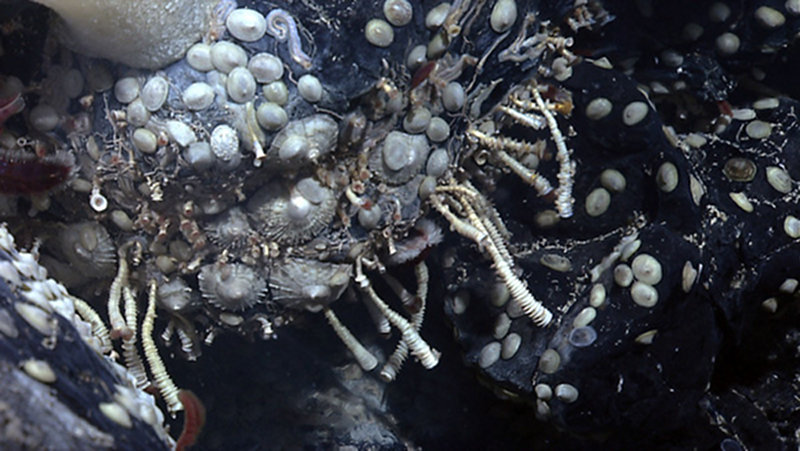
Siboglinid tube worms, perhaps a species not observed before on the Galapagos Rift, were found at Tempus Fugit discovered on July 22. Image courtesy of NOAA Office of Ocean Exploration and Research. Download larger version (jpg, 1.3 MB).
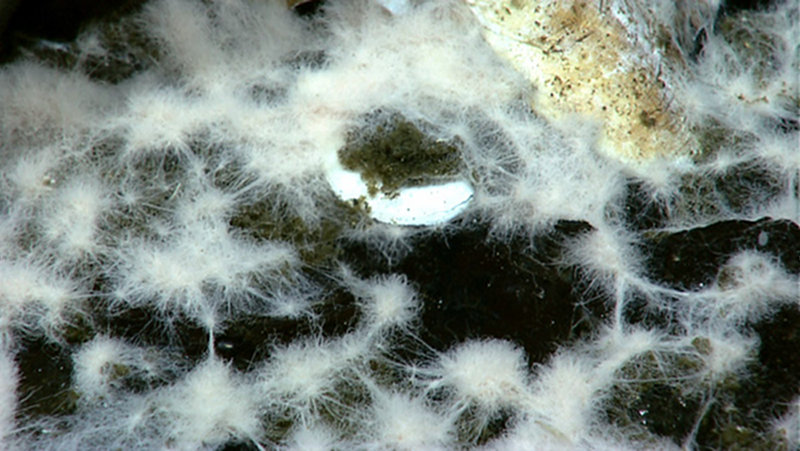
Microbial and sponge material were found in pockets in the active portion of the Tempus Fugit vent field (live clam at center). Image courtesy of NOAA Office of Ocean Exploration and Research. Download larger version (jpg, 1.4 MB).
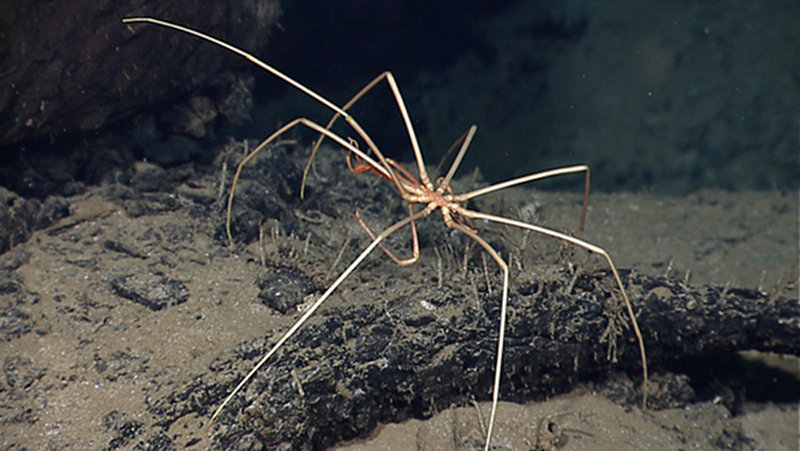
A sea spider makes its way across Little Herc's field of view. These bizarre predators walk along the bottom, stopping to feed on soft-bodied invertebrates. Image courtesy of NOAA Office of Ocean Exploration and Research. Download larger version (jpg, 1.3 MB).
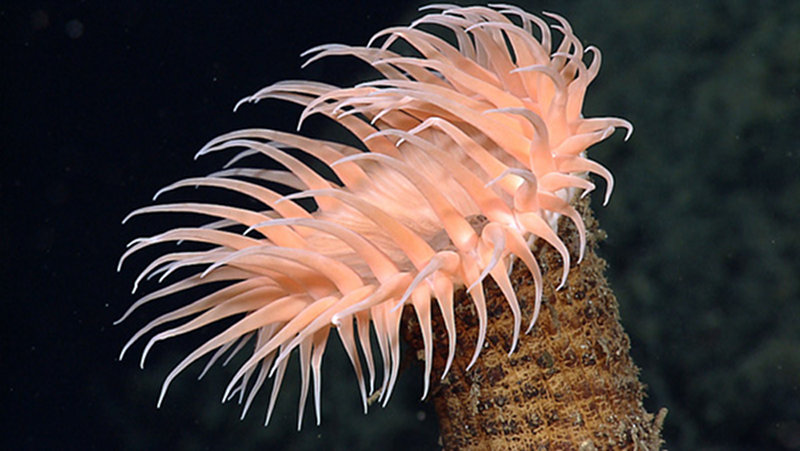
One of many sea anemones found on the outskirts of the vent site discovered on July 22. Image courtesy of NOAA Office of Ocean Exploration and Research. Download larger version (jpg, 1.4 MB).
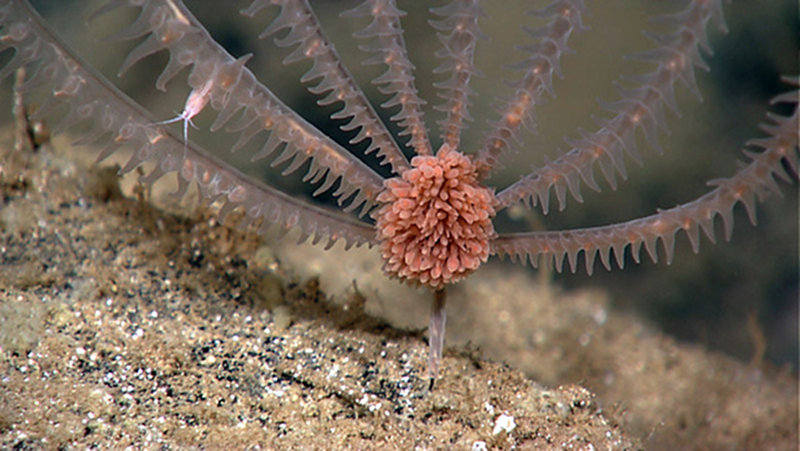
An amphipod no longer than a pencil eraser clings to a low branch of this black coral on the Galapagos Rift. Image courtesy of NOAA Office of Ocean Exploration and Research. Download larger version (jpg, 1.3 MB).
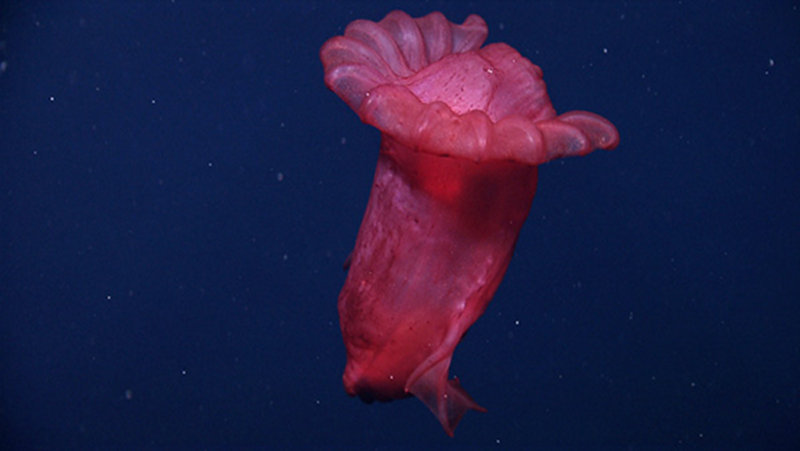
Close-up of a free-swimming holothurian sea cucumber, which feeds on the ocean floor, but can also swim freely in the water column, perhaps to avoid predators. Image courtesy of NOAA Office of Ocean Exploration and Research. Download larger version (jpg, 967 KB).
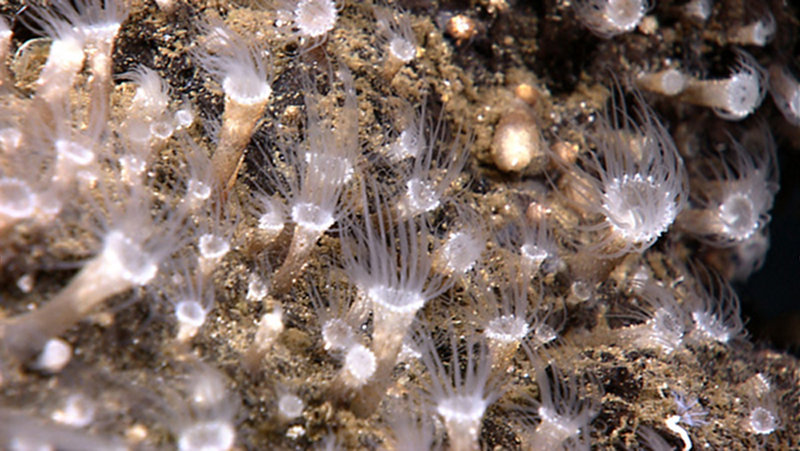
Carpets of small (inch-long) anemones covered rock faces adjacent to the active venting in the Tempus Fugit vent field. Image courtesy of NOAA Office of Ocean Exploration and Research. Download larger version (jpg, 1.5 MB).
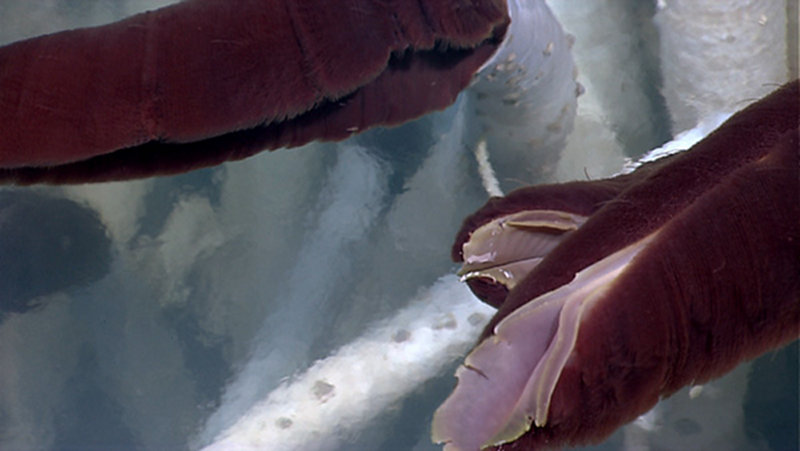
Close-up of the 'plume' extending out of Riftia pachyptila's hard tube. The bright red coloring is due to complex hemoglobin within the plume used to transport oxygen through the worm's respiratory system. Image courtesy of NOAA Office of Ocean Exploration and Research. Download larger version (jpg, 1.1 MB).
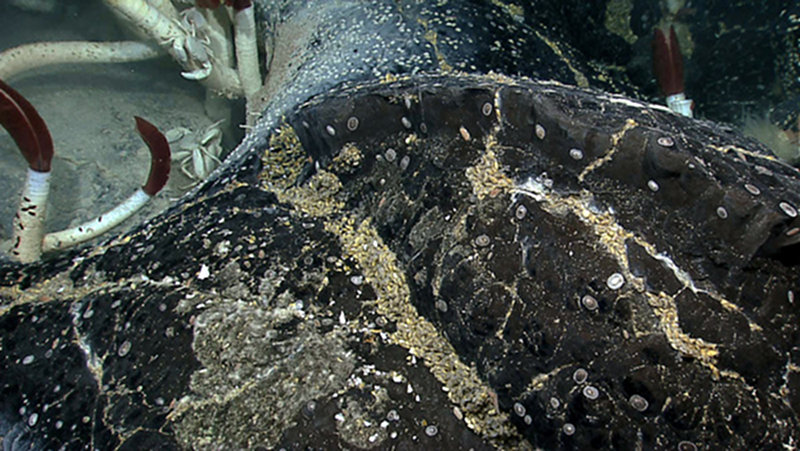
Wide angle view of small mussel colonizers lining cracks and pockets in the Tempus Fugit vent field. Transparent limpet gastropods can be seen on the adjacent rock surfaces. Image courtesy of NOAA Office of Ocean Exploration and Research. Download larger version (jpg, 1.6 MB).
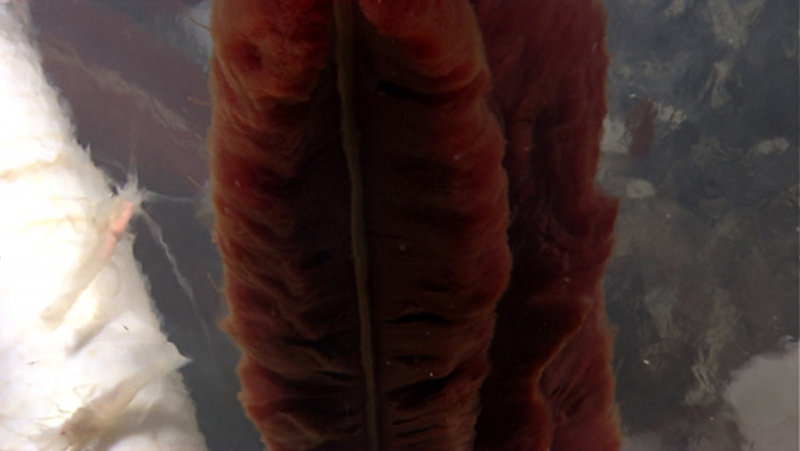
Close-up of Riftia's vivid red gas exchange organ or 'plume' extending from its tube. The blurring to the left and right is caused by the vent fluids actively mixing with the seawater. Image courtesy of NOAA Office of Ocean Exploration and Research. Download larger version (jpg, 1.0 MB).

Large fields of mostly dead clams surrounded the vent field. Living clams were also seen among the masses of empty shells. Image courtesy of NOAA Office of Ocean Exploration and Research. Download larger version (jpg, 1.6 MB).
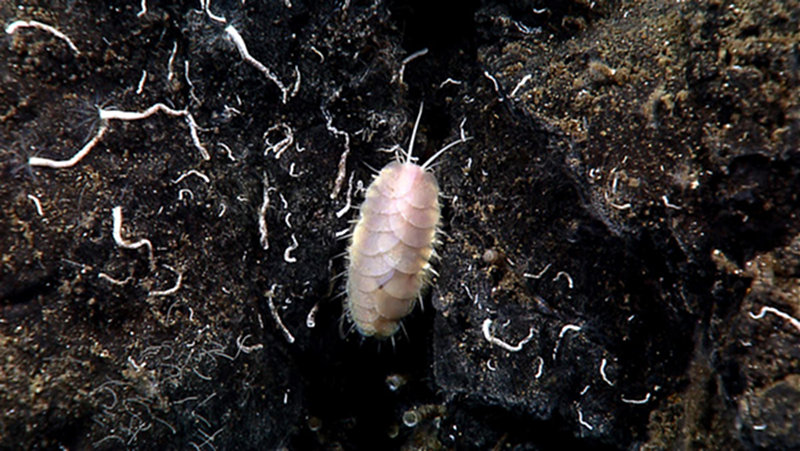
Polychaete diversity: a scale worm clings to rock also inhabited by smaller feather duster worms. Image courtesy of NOAA Office of Ocean Exploration and Research. Download larger version (jpg, 1.7 MB).
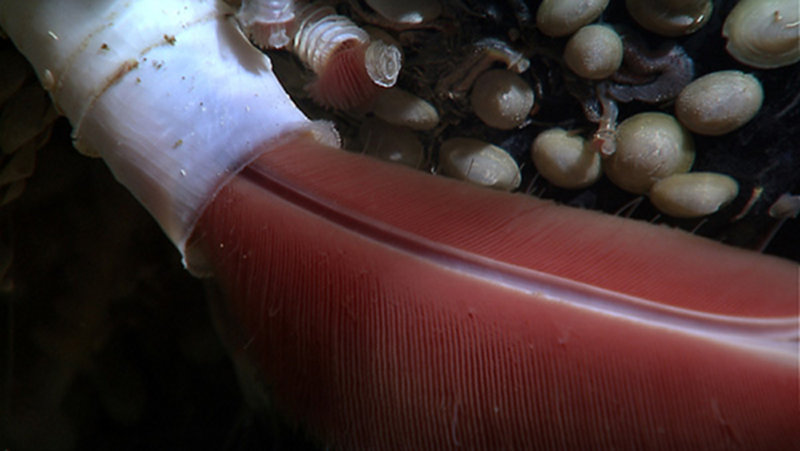
Large Riftia and much smaller tube worms exist side-by-side at the discovered Tempus Fugit vent field. Gastropod limpet (at right) graze on microbes on the basalt rock. Image courtesy of NOAA Office of Ocean Exploration and Research. Download larger version (jpg, 1.1 MB).
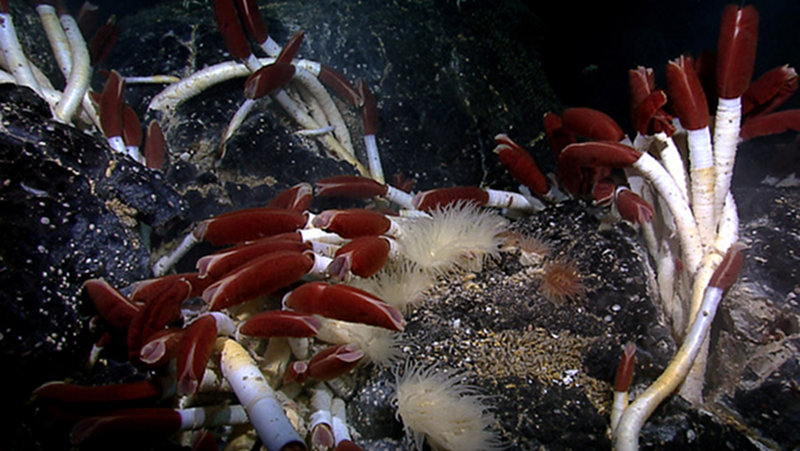
One of the largest concentrations of Riftia observed, with anemones and mussels colonizing in close proximity. Image courtesy of NOAA Office of Ocean Exploration and Research. Download larger version (jpg, 1.4 MB).
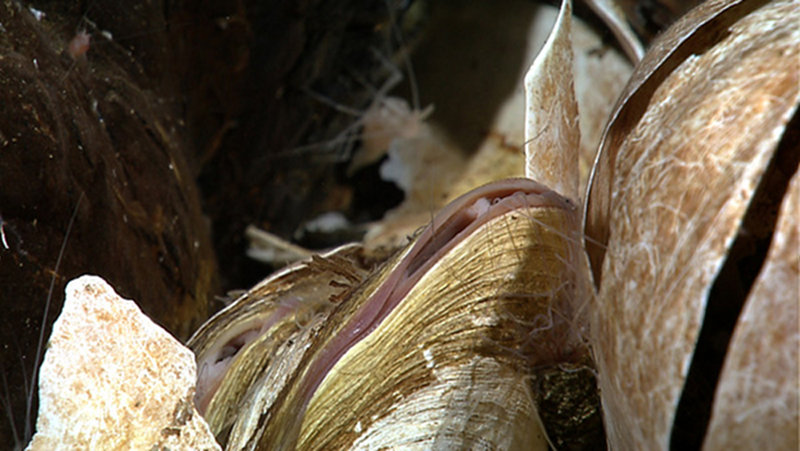
The first photographic evidence of a live clam at the vent field came only after scores of empty shells had already been observed. Image courtesy of NOAA Office of Ocean Exploration and Research. Download larger version (jpg, 1.4 MB).
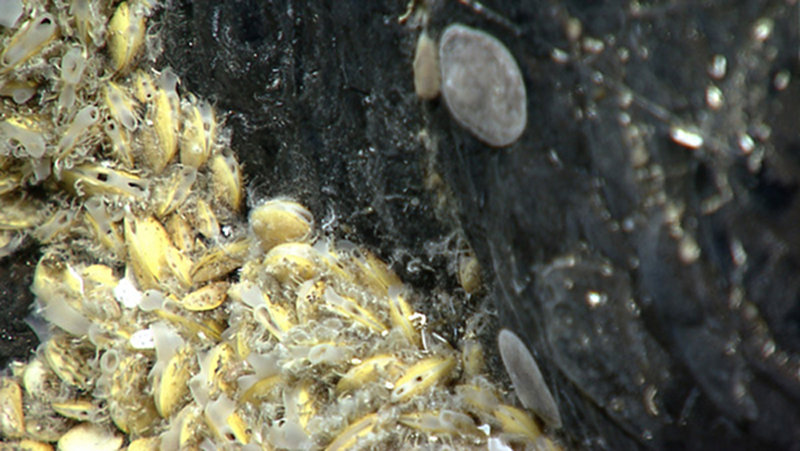
A thick pocket of young mussels inhabiting a cleft in the seafloor at the vent site. Image courtesy of NOAA Office of Ocean Exploration and Research. Download larger version (jpg, 1.4 MB).
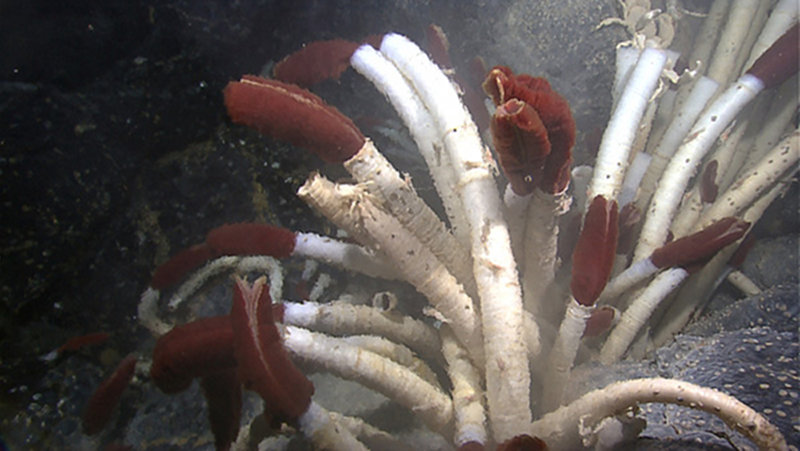
A tight aggregation of Riftia blurred by hydrothermal fluids emanating from cracks in the rock. Several crabs and shrimp can be seen clinging to the tube structures. Image courtesy of NOAA Office of Ocean Exploration and Research. Download larger version (jpg, 1.2 MB).